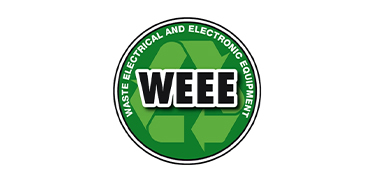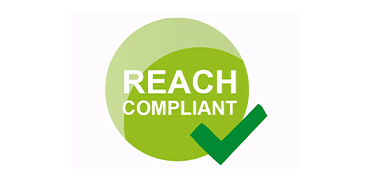What is the HDI pcb manufacturing process
Views: 0 Author: Site Editor Publish Time: 2023-12-06 Origin: Site








HDI circuit boards(High density interconnector), applies micro-blind buried hole technology to cover a relatively high density circuit board. It has an internal circuit and a surface circuit, and then the processing technology such as drilling and plating in the hole is used to complete the internal connection of each layer circuit.
With the rapid development of electronic technology, especially under the trend of smaller and miniaturized electronic products, HDI circuit boards came into being. It is a multilayer circuit board with complex internal layout, usually need to use high-density interconnection technology to achieve. So, what is the HDI pcb manufacturing process? The following will explain in detail for you.

1. Raw material preparation
The raw materials used in the manufacture of HDI circuit boards are mainly nickel copper foil, multilayer sheet, prepreg and so on. In the preparation of raw materials, it is necessary to select and purchase according to the actual production needs, and carry out the necessary testing and inspection of raw materials to ensure that their quality meets the requirements.
2. Outer circuit design and production
First of all, it is necessary to design the outer circuit diagram, and select the plate and confirm the area according to the design. Then, copper plating is performed and processed such as lithography, film removal and etching are carried out to complete the production of the outer circuit.
3. Inner circuit design and production
The inner circuit diagram is the same as the outer circuit diagram, except that the inner circuit needs to be aligned, fitted, prepressed, copper plating, lithography, film removal and etching.

4. Printed circuit board design and production
Print board refers to the basic structure and support of HDI circuit board. The design of the printed board needs to be laid out and pressed according to the requirements to ensure that the HDI board can work stably and reliably. Then, the process of pressing, grooving, integration and polishing is carried out to finally form a complete printed board.
5. Manufacture of multilayer circuit board
According to the design of the multilayer circuit board combination, complete the inner and outer circuit communication. Then, copper coating, semi-curing, prepressing, drilling, plug-in, copper pressing, milling, sheet metal, bare plate etching, prepreg coating, drying and other processes, and finally form a complete multilayer circuit board.
6. Surface treatment and testing
Finally, the complete HDI circuit board is surface treated and tested. Surface treatment includes Immersion gold/silver, LF HASL, etc., to enhance the electrical conductivity and corrosion resistance of the plate. The test includes electrical performance test, appearance test, reliability test, etc., to ensure that the HDI circuit boards can operate normally.
The HDI PCB cost can be affected by several factors. Addressing these factors and choosing the right alternatives will help you save PCB manufacturing costs and optimize the value of PCB investment.
1. Select the correct type of hole: hole refers to the electrical connection between the two layers of the PCB board. The holes have two pads that are placed adjacent to each other on two different layers of the board. Blind vias are usually exposed on one side of the board, while buried vias in pcb are not exposed on the board, but they connect the two layers internally. A microhole is a small through hole with a diameter of 0.15mm. They are usually drilled using laser equipment and require high precision. It is easy to understand that microholes add more cost than other through-hole types. Therefore, it is wise to choose the type of via while keeping in mind the requirements of your application.
2. Stacking height and number of layers: Stacking is one of the significant features that increase the cost of PCB components. 1-N-1, 2-N-2, and 3-N-3 are the most common HDI stack up types. The 2-N-2 layout is considered more challenging than 1-N-1, and 3-N-3 is even more challenging then 2-N-2. This is because as the number of layers increases, so does the amount of work.
3. Material selection: Fiberglass, FR4 and copper are several commonly used core materials for the manufacture of HDI PCB boards. These materials have different physical properties, so their costs are also different. When selecting a material, it is important to focus on three characteristics: the material’s dimensional stability, machinability, and ability to withstand multiple laminated. HDI designs involve laser drilling, which can be problematic if the material cannot withstand drilling. Therefore, it is important to ensure that the material meets all these requirements while providing a price advantage.
4. Stacked and interlaced settings: Stacked holes are usually filled with copper, while interlaced holes are not filled. No additional imaging steps are required in staggered holes. However, laminated perforation requires planarization and additional imaging steps. All of this makes interleaving holes very simple compared to stacking holes. This simplicity helps to further reduce manufacturing costs.
5. Multiple compaction: The number of layers and the blind hole structure determine the number of compaction required. While more laminating means more processing time and higher costs, adding more costa can improve the performance and cost-effectiveness of the product.
6. Stack hole VS cross hole: There may also be a cost difference between stack hole and cross hole settings. The overlapping pores can be filled with copper, but the intersecting pores cannot. Filling blind burials means that more materials and time are needed, so the corresponding cost is higher.
7. Blind via cost and mechanical hole cost difference: Ordinary mechanical through holes can be stacked multiple PCBs at the same time during processing, while blind vias in pcb are usually processes by laser or mechanical deep drilling, and only one pcb can be processes at the same time during processing, so that the blind via cost will be higher than ordinary mechanical holes.
+86-18925293263








